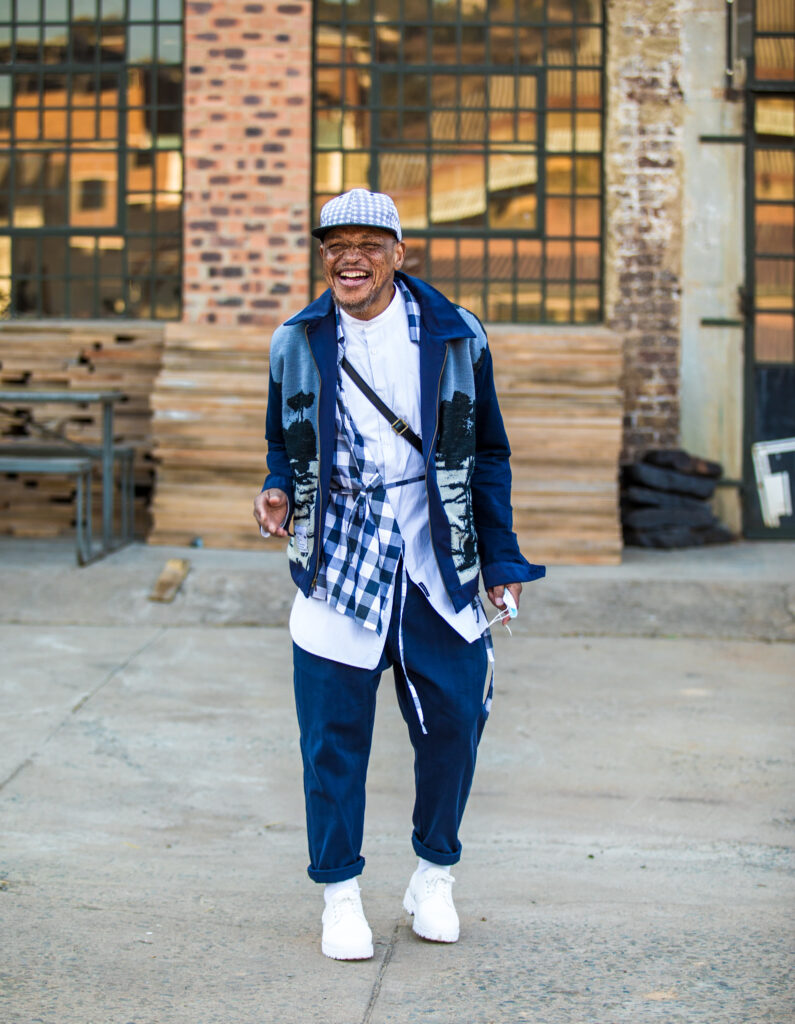Felipe Mazibuko. (Photo: Arthur Dlamini)
Professional longevity often means having the ability to note and truly understand the evolution of an industry and the society in which it operates. For South African fashion’s own Felipe Mazibuko, a little over 30 years in the industry means understanding how the transition into a new democracy and now into the global digital media space affects and shapes our style. In addition to this insight, it’s not a stretch to say that Felipe, with decades of experience and expertise, is one of the stylists that helped shape post-1994 South African tastes, identities and aesthetics.
Starting in the late 1980s, Mazibuko has built a reputation as one of South Africa’s most important stylists, creative thought leaders and tastemakers. His work as a stylist ranges from personal styling of celebrities and notable professionals to collaborating with local brands to achieve stylistic nuance. He also spends a lot of his time encouraging and empowering young designers to gain a better understanding of the business of fashion to build a more resilient, sustainable and prosperous local industry.
Throughout his career, he has worked with a multitude of game-changing, local fashion brands ranging from the original South African streetwear brand Loxion Kulca to the master couturier Marianne Fassler. His work with these brands has largely been as a consulting stylist who helps shape the narrative of their collections for fashion shows and shoots.
 Fashion stylist Felipe Mazibuko. (Photo: Arthur Dlamini)
Fashion stylist Felipe Mazibuko. (Photo: Arthur Dlamini)
Mazibuko has a phenomenal grasp on the implications of the relationship between style, fashion and culture and has frequently been known to call out those who believe fashion is about glamour, glitzy fashion weeks and clout. For him, style and fashion are not frivolous pursuits but rather very serious cultural pursuits that require concerted and intentional research, study and gravitas. He believes that fashion has the same, if not more, cultural influence as music, film, theatre and fine art and should receive the same type of respect and dedication as those fields.
One of Mazibuko’s most pressing concerns right now is the influence of social media, not on the dissemination of fashion and style, but in the way many young participants in the fashion industry (as well as in all the creative industries) use it. As he sees it, in a pre-social media world, stylists and designers spent countless hours researching inspiration from a wide range of spaces such as the internet, libraries, exploring the cities they lived in or travelling to seek outside inspiration. This approach forced creatives out into the world to challenge and be challenged so that their work was informed by insight, intuition, experimentation and collaboration.
While Mazibuko has unending respect for those who put in the work, he feels many of the top stylists, designers and fashion writers that do put in that level of work are often overlooked or undervalued by the misdirection and watering down caused by social media. He points to local designers such as Palesa Mokubung, who was the first African designer to put together a collaboration with H&M, but whose achievement he feels did not receive the recognition it deserved.
Mazibuko himself has chosen to step back from social media as a means of rewilding his creative and research processes. When work permits, he spends hours on end watching videos on YouTube, exploring online and in-person archives, researching a wide range of topics both immediately related and seemingly unrelated, rewatching old interviews and, in general, forcing his mind to absorb and synthesise as much information as possible. This dedication to exploring is, to him, at the core of complex and important creative production.
With many future designers coming from a post-social media world, and especially in light of how the pandemic entrenched the supremacy of social media, Mazibuko wishes more young people would see social media platforms as tools for communication instead of research. And considering what we now know about the algorithmic manipulations and psychological incentives tied into social media platforms, this is probably the best advice anyone can give to someone who doesn’t want their creative output to look like everyone else’s.
Additionally, he wishes young people would seek out mentorship from those who have established themselves creditably and successfully. He believes that this is how young entrants to the industry will learn to develop the networks, work mentality and grit to build a successful and inspired creative career. He posits that without putting in the research and hands-on work the result is a “creative deficit” and that the filtering of art and design through social media is dumbing down entire creative industries into the gimmicky, the trendy and the uninspiring. — Anita Makgetla